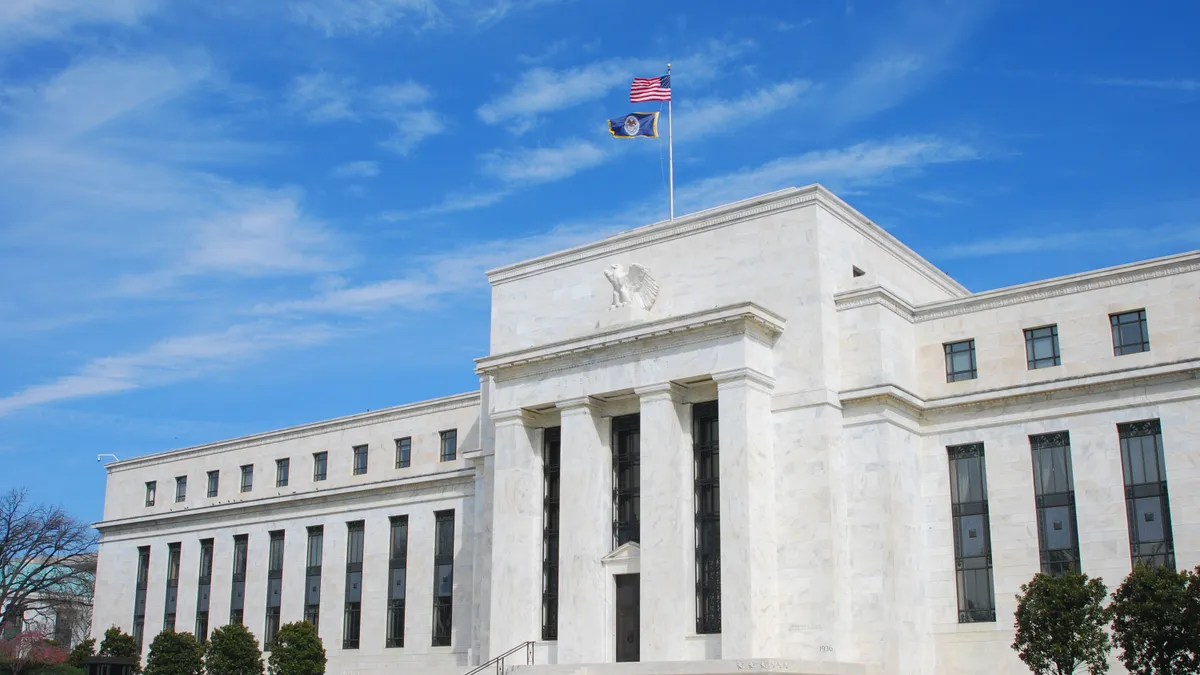Dive Brief:
- Federal Reserve Bank of Chicago President Austan Goolsbee sought Monday to cool speculation of a bold and imminent cut to borrowing costs, saying unexpectedly weak growth in payrolls in July was within the standard month-to-month deviation.
- “You see jobs numbers come in weaker than expected, but not looking yet like recession,” Goolsbee said in a CNBC interview, referring to a 114,000 increase in payrolls last month and a rise in the unemployment rate to 4.3% from 4.1% in June. “The payroll number is plus or minus 100,000 a month, so be a little careful over concluding about things in the margin of error.”
- Also, “GDP [gross domestic product] was relatively stronger than we expected,” he said, adding “economic growth continues still at a fairly steady level.”
Dive Insight:
GDP rose at a 2.8% annual rate during the second quarter after gaining 1.4% in Q1 as consumption strengthened and both business fixed investment and inventories increased.
Meanwhile, the service industry — which accounts for about 70% of the economy — bounced back last month after slumping in June by the most in four years, the Institute for Supply Management said Monday. Its services index increased 2.6 points to 51.4. A result exceeding 50 signals expansion.
Still, U.S. employment, wages and manufacturing have weakened in recent months, prompting many investors to predict a slowdown and more aggressive Fed easing than forecast early last week.
Traders in interest rate futures see 85% odds that Fed policymakers will cut the benchmark interest rate by a half point at a September meeting, according to the CME FedWatch Tool. On July 29 — before the payrolls report on Friday — they saw just 11% odds of a reduction of that size from the current range of 5.25% to 5.5%.
Other Fed officials this week are likely to try damping forecasts of a big and sudden reduction to borrowing costs, Ed Yardeni, president of Yardeni Research, predicted Sunday in a research note to clients.
“We think they might push back against the rate-cut mob that is calling for a 50 bps [basis points] cut in the federal funds rate in September,” Yardeni said. “It would be a shame if they joined in the recession hysteria since financial markets are on edge.”
The Nasdaq, Dow Jones Industrial Average and Standard & Poor’s 500 index each fell more than 2.5% Monday after big declines on Friday on investor concerns that the Fed has held the federal funds rate too high, pushing the economy toward recession.
Goolsbee acknowledged the need for the central bank to monitor for more signs the labor market is flagging and underscored the value of a timely reduction in the benchmark rate.
“You see some weakness in the labor market — we have to pay attention to that,” he said.
“My view is that we’re as restrictive in real terms, as we’ve been higher than this entire cycle and the highest in many decades,” Goolsbee said, referring to the federal funds rate. “And you only want to be that restrictive as long as you have to,” he said.












